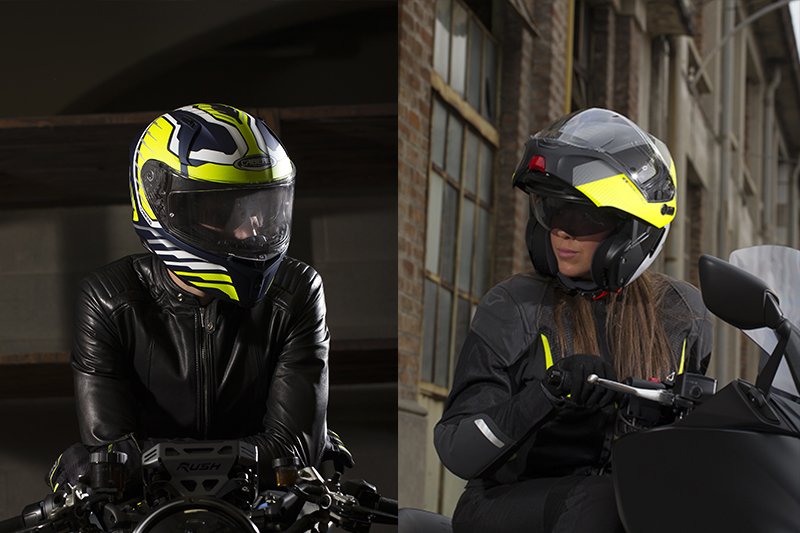How to Choose a Motorcycle Helmet
Choosing the right motorcycle helmet is essential for your safety and comfort. A helmet protects your head in case of an accident, but not all helmets are the same. Knowing how to choose a motorcycle helmet will help you pick the best one for your needs. In this article, we’ll go over important factors to consider when selecting a helmet.
1. Consider the Helmet Type
One of the first things to think about when learning how to choose a motorcycle helmet is the type of helmet. Different helmets are designed for different riding styles and preferences.
Full-Face Helmet
Full-face helmets are the most protective type. They cover your entire head and neck, providing maximum protection. If you’re looking for the safest option, this is the best choice. It also offers the most comfort since it shields you from wind, rain, and noise.
Open-Face and Half Helmets
Open-face helmets cover only the top and sides of your head, leaving your face exposed. They are lighter and offer more freedom but don’t provide as much protection. Half helmets provide the least coverage but are the lightest and most breathable. However, they leave your head and face vulnerable to injuries.

2. Check the Helmet Fit
Another important factor in how to choose a motorcycle helmet is the fit. A properly fitted helmet is critical for both comfort and safety. If a helmet is too loose, it won’t protect you properly. On the other hand, a helmet that’s too tight can be uncomfortable and cause headaches.
How to Measure for the Right Fit
To find the right size, measure the circumference of your head using a tape measure. Make sure to measure around the widest part of your head, just above your eyebrows. Then, compare your measurement to the manufacturer’s size chart. The helmet should fit snugly, but you should still be able to move your head comfortably.
3. Consider Helmet Safety Ratings
When deciding how to choose a motorcycle helmet, safety should be your top priority. Make sure the helmet has passed safety standards. The most important certifications to look for are DOT (Department of Transportation) and ECE (Economic Commission for Europe). Helmets with these certifications have been tested and proven to meet high safety standards.
Look for Additional Safety Features
Besides certifications, some helmets come with extra safety features like multi-density foam for better impact absorption. Some even have additional protective elements around the chin and neck areas. These features help improve safety in case of an accident.
4. Think About Helmet Weight
The weight of your helmet can affect your comfort, especially on long rides. When you’re deciding how to choose a motorcycle helmet, consider the weight of the helmet. A heavy helmet can strain your neck, while a lightweight helmet will feel more comfortable.
Balance Between Safety and Comfort
While a lighter helmet might be more comfortable, make sure it still offers enough protection. Helmets with more padding and additional safety features tend to be heavier. Finding a balance between comfort and safety is essential when choosing a helmet.
5. Pay Attention to Ventilation
Ventilation is another key factor to consider when learning how to choose a motorcycle helmet. A helmet with proper ventilation will keep you cool and comfortable, especially during hot weather. Look for helmets that have multiple air vents to improve airflow.
How Ventilation Affects Comfort
Good ventilation helps prevent sweating and fogging, which can make your ride uncomfortable. It also allows for better air circulation, keeping your head cool. If you often ride in hot climates, a helmet with adjustable vents might be a good option.
6. Look for a Visor or Face Shield
Many helmets come with a visor or face shield to protect your eyes from the wind, sun, and debris. When thinking about how to choose a motorcycle helmet, you should consider whether or not you need a visor. A visor can protect your eyes and improve your visibility while riding.
Additional Benefits of a Visor
A visor or face shield also offers protection from rain and insects. It can be easily replaced if it gets scratched. Many helmets allow you to choose between different types of visors, such as tinted or clear, to suit your preferences and riding conditions.
Conclusion: Make the Right Choice for Your Safety
Knowing how to choose a motorcycle helmet is essential for staying safe on the road. Remember to consider the type of helmet, its fit, and its safety features. Also, make sure to choose a helmet that’s comfortable, ventilated, and offers the right amount of protection. Taking the time to find the perfect helmet will ensure you ride safely and enjoy your motorcycle experience to the fullest.



